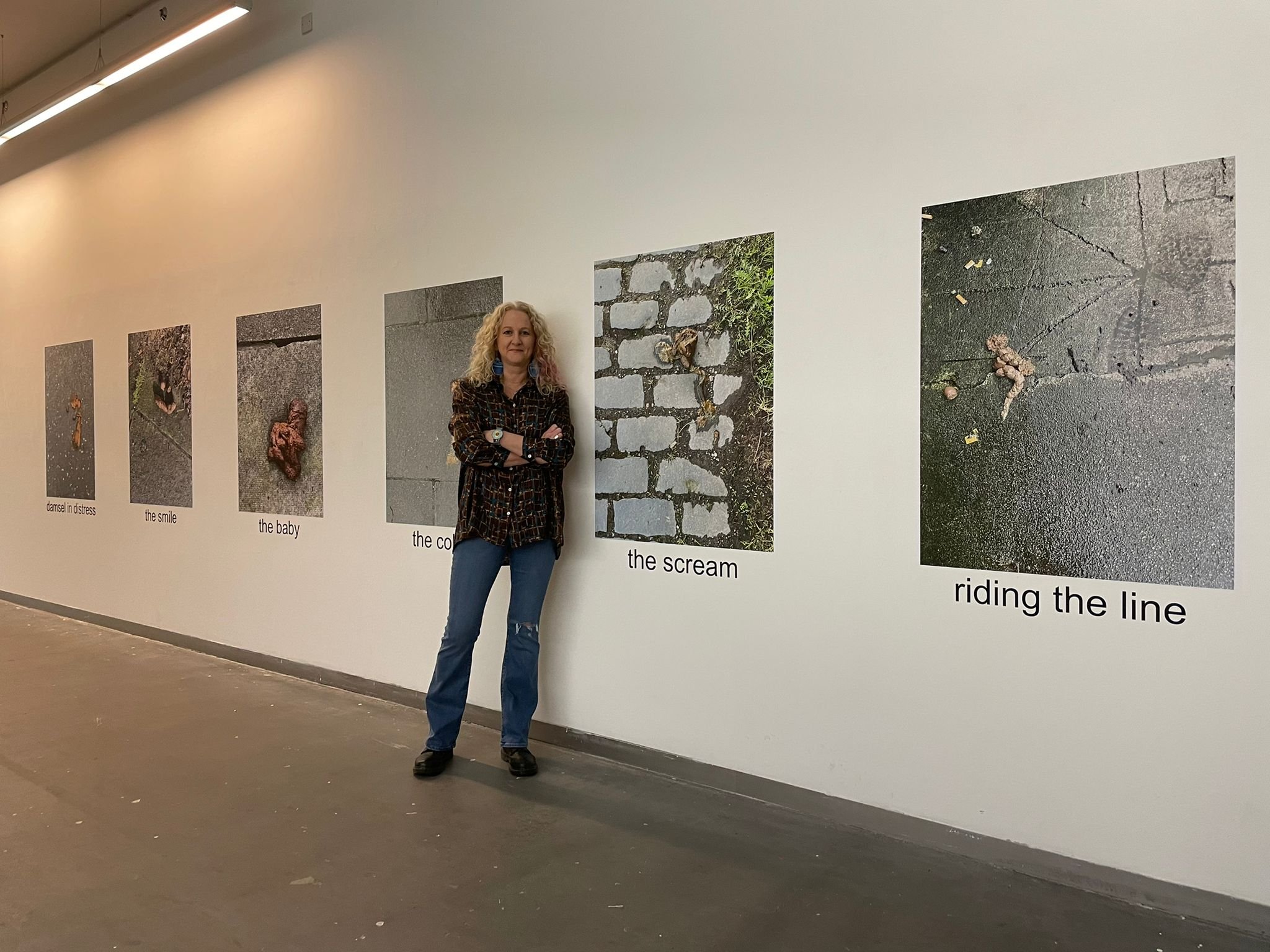Abstract
'I cannot look up because of you' is a descriptive text on the repetitive process of
sourcing, collecting, and carrying flattened cardboard boxes into the studio, to transform them into mush and roll into spheres. Why? It is too early to know; the journey is just beginning and will slowly introduce itself through making.
One of the difficulties for me will be knowing when to stop, that point of taking a work of art too far. I have given myself to the process and trust that the answers to my questions will become more apparent as I travel through the work.
Getting to know an Object.
What every poet starts from is his emotions [and] the struggle---which alone constitutes life for a poet---to translate his personal and private agonies into something rich and strange, something universal and impersonal.
T. S. Eliot, 1927[1]
I walk as the methodology to familiarise myself and gain knowledge of my surroundings. Nomadically living away from my family and friends, I am forced to critically consider my vulnerabilities and private agonies and open a conversation through artmaking to reveal this struggle.
Walking the streets of Glasgow has robbed me of looking up, dreaming, and getting lost in my thoughts. I walk, fearful of treading on something undesirable on its verges; dog poop, vomit, or mushy, waterlogged cardboard boxes; the latter having similar material qualities as the previous two. As an artist constantly looking for beauty, I find myself creatively challenged, anxious, and looking for a way to narrate this story.
Intuitively, I observed the material offered up on the streets of Glasgow and returned to my studio with one cardboard box. I soaked the cardboard with water until it reverted to mush; I squeezed and shaped it into a sphere and removed its functionality. Visually I had experienced the waterlogged boxes and was not surprised by the stank smell of the mushy cardboard as I squeezed the water out. Again, I was reminded of the discomfort I felt walking past it on the street.
This cardboard sphere sat on my desk for months, placed to one side. Every now and then, I would play with it, turning it over in my hands, observing its material qualities, listening to the sound it made when tapped, and smelling its surface for any change in odour. Finally, it got the better of me, its strangeness became exciting, and I began to create more.
Sourcing, collecting, and carrying bundles of boxes back to the studio every day is labour intensive. The process of tearing, soaking, and making these objects is physically demanding on both my hands and wrists. I work hard to make them as spherical as possible, shaping each ball between my hands. The process is therapeutic, rich, generative, and intriguing. Each sphere is made by the hand, repetitiously connecting and thinking through the process, questioning the cardboard's history, usage, and purpose. Reinventing each cardboard box and reimagining its ability to adapt to their new form, telling a unique story with contemporary narratives.
I relate to these spheres as I watch them age, wrinkle, and shrivel in front of my eyes. Their skin is reminiscent of my own in colour and form, revealing a lived history. They appear playful and tactile and encourage interaction. Piled together on my desk, they speak of cabbages and vegetables stacked neatly in a fresh food market. They remind me of clay; I respond to them as if they were.
Each sphere comments on daily events, sustainability, and environmental issues. They speak of us, consumption, consumerism, and capitalism, reeking of overproduction. They bear witness to its branding and historical context, stamped with corporate logos reminding us of its ownership, use, time, labour, and transportation implications. They are infectious, multiplying in numbers, anxiously taking over my studio, consuming me. I will never need to stop making them; I see them going viral as a reference to the rapidly changing times we are experiencing today. One would never be enough!
[1] Kagan, Andrew, Paul Klee/Art & Music (Ithaca, N.Y.: Cornell University Press, 1983)











